Living Off of the Land:
Trying to make every project succeed, every scrap count, and every animal pay for itself.
Living a Maine Life as Homesteaders...
Having begun well some 33 years ago, with willing labor from our children (before having been foolishly lured away from home by business ventures and offers of employment), and then taken it up again nearly 7 years ago, we are well approaching Edison's philosophy, "I may not yet have succeeded to invent the light bulb, but I HAVE discovered nearly a thousand methods that WON'T work!" No, in all seriousness, there have been some fabulous tips and tricks, concepts and habits that will stand to make a homestead prosper, and we would like to share much of what we have learned here on this page. So please enjoy the stores and thoughts below, for we have certainly enjoyed learning them for you!
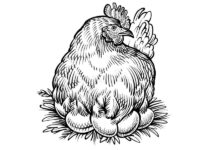
When available, this LINK will lead you to more posts on layer hens.
Animals: Laying Hens
Over the years, we have raised just about every breed of brown and blue egg-layers and quite honestly, have seen little difference in the consistency of production. This may be due to the fact that we enjoy keeping a variety of breeds among our 20-25 hens, and they may tend to get into a uniform cycle. Because we enjoy allowing them to free range, we prefer to select them more for disposition than anything else - especially when there are always a few grandchildren wandering the property. I will tell you that some of our favorites are Plymouth and Barred Rocks, Americanas, and Buff Orpingtons breeds. We personally prefer to pay for chicks than keep a rooster!
We can heartily recommend Hoover's Hatchery for all your poultry purchases. Their customer service is spectacular!

When available, this LINK will lead you to more posts on broilers.
Animals: Meat Chickens
Even after 6 years of raising broilers, I would say that we are still quite the novices. We have tried both heritage breeds and crosses, and quite honestly find that we can't justify raising anything other than Cornish Cross broilers. We do confine them to a spacious pen and protected yard for 2 reasons: predators and general stupidity on someone's part - not being roosting birds, I just don't trust them to return to the pen each evening as do our hens. The bulk feed we use and the fact that we treat their drinking water with low-doses of ClO2 (to reduce gut health issues), will generally return 8+ pound birds in 8-9 weeks, so the training time is quite limited. By the time they are processed (here on the farm), they can hardly walk. Again, we can heartily recommend Hoover's Hatchery for all your poultry purchases.

When available, this LINK will lead you to more posts on game birds.
Animals: Other Game & Meat Birds
For these past 6 years, we have also raised turkeys (with good success if they survive the Spring shipping to Maine), tried pheasants, and now geese. The learning curves have been enormous and at times costly. Here would be what can pass on with confidence:
- Geese (& Ducks) - These two waterfowl species can co-exist, will produce some tremendous (though few as compared to hens) eggs and when managed will do as good a job of consuming ground cover as a goat or pig. Despite their appearance, there is not a great deal of meat on either, but I understand the price/pound is some of the highest on a farm. This year has proven that geese are well worth continuing to develop as a farm staple.
- Turkeys - Our turkeys are ALWAYS over 30 lbs in just 12 weeks, tender and absolutely delicious. If they would fit better in our plucker, we would raise more to sell, but alas, our birds dwarf both our plucker and our 15" vacuum sealer. 12 turkeys have the capacity to keep a family in meals for a year!
- Pheasants - Having raised these just one year, found them too slow to grow, too small to process and too susceptible to disease, we ended up releasing them into the wild, only to have them return the past two Summers to serenade us.
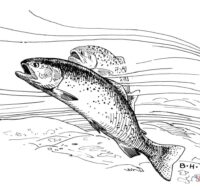
Animals: My Biggest Misadventure
Then there was the year my absolute cleverest idea became a thorough-going farm-management nightmare: Raising trout in two 275 gallon totes buried within my original greenhouse. The concept being to add hydroponics, feeding the trout with the microbial run-off from the plants, and the plants from the nitrogen from the fish poop. Honestly, it made perfect sense in theory!
Unfortunately, the trout required even cooler temperatures, better water quality and more 'pen' maintenance than any species on the farm and the mortality rate was astronomical! Starting with 150, I finally moved the last 30 to a pond where they thrived in the mucky water to which their species was created. Perhaps a dug pond in the future will tempt me to try again, but the totes will grow now be used to grow more herbs and vegetables!
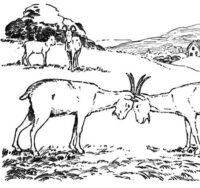
When available, this LINK will lead you to more posts on goats.
Animals: Dairy Goats
I think it is safe to say that goats are in our blood. There has been no breed of animal to which we as a family and especially me as a animal-lover has taken near and dear to our hearts. They cannot be raised without some serious commitments, and if you think you are going to fence them in completely - you can't be serious!
Here are some quick thoughts and tips, which I will keep brief but develop more through adding subject-matter posts over time.
- De-horning - We do not disbud our young goats, and let their horns develop naturally. They will head-butt regardless if not taught to love and respect you, and horns make great steering and directing tools when you need their attention.
- Housing Cleanliness - This is SO essential, and back-breaking if you don't set up your housing to be easily accessible to a bucket-tractor. The best bedding (if you are going to clean by hand) is hay (shavings turn to rock) and if not cleaned frequently you will find mastitis and high mortality among the newborns.
- Water-Treatment - Goats are VERY fussy about water quality, and next to camels, will drink some of the highest amount of water per pound each day. We again treat their water pails with ClO2 (chlorine dioxide @ 3-5 ppm) to help with preserving digestive health, and to assist their natural immune system.
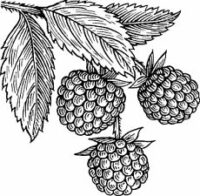
When available, this LINK will lead you to more posts on berries.
Foods & Harvests: Berries
When we purchased this patch of clay and ledge, it had one tremendous redeeming characteristic - acres and acres of naturally occurring raspberries and blackberries! In those walks through the woods with our children (when it was so dense we thought all were lost) we would regularly come upon half-acre patches here and there of berries, frequented of course by an abundance of bees!
Now the land is far more open and when the seasons for berry harvesting are 'ripe', Brenda and our grandchildren are right on top of it. Brenda filling colanders for washing and freezing, children filling bellies, staining hands and enjoying the goodness of God!
Recently, we have discovered that these are not the only berries to grow naturally on our farm. I have taken a tremendous fancy to High-Bush Cranberries that are more trees than bushes. They are easy to pick, grow in great clumps and make marvelous syrups, sauces and elixirs. With the last "fruit' I will add here, Rosehips, I hope to explore the numerous potentials for capturing the vitamins and other healing nutrients within these treasures that have been 30+ years right within our grasp.
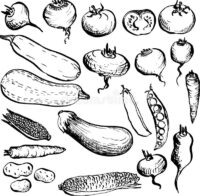
When available, this LINK will lead you to more posts on vegetables.
Foods & Harvests: Foraging for Vegetables
I think I may have mentioned it earlier, but our pigs left a legacy far beyond two freezers full of sausage and bacon...vegetables!
During the 5 years that we raised pigs, we would have both regularly scheduled and emergency calls from a local food cupboard that would have spoiling vegetables and other foods: unsold pre-made salads, soft tomatoes, strange squashes and other once-fresh foods.
We would un-box them ad place them in pails and mash it all up with the bread gathered now and again from a distributor. The pigs ate and as designed, fertilized the surroundings.
Until this year, when they were no longer trampling what they planted, we had no idea what a tremendous field of produce they had provided for perpetuity!
Now the gathering of vegetables in this plot is somewhat unconventional - surely more of a foraging than a harvesting, but quality of the squash and variety of tomatoes now available in this plot of land is amazing! Cleared, tilled, and planted - that's what a pair of pigs can do!

When available, this LINK will lead you to more posts on greenhouses.
Foods & Harvests: The Value of Greenhouses
Some vegetables really seem to elude success here in Maine.
We have plenty of material for soil improvements, with an abundance of manure and other compost materials, we have ready sources for sand to break up clay and our raised beds generally produce well. However, it would be nice to have salad greens for more of the year, and for some reason, we really stink at growing good carrots and onions (two generally long-growth cycle vegetables).
This year, we grew all of our cultivated cooking herbs, all of our kale, spinach and lettuces in our single greenhouse. It provided for a greater degree of control over the watering cycles, climate and each plant really thrived. So...we have decided to increase the space for growth in this manner and will be adding a few more greenhouses. I am absolutely determined to conquer carrots, onions, celery and (please don't tell my wife) leeks!
We'll get back to you with how this all progresses!
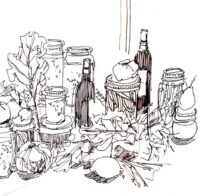
When available, this LINK will lead you to more posts on canning.
Home Industries & Crafts: Cooking & Canning
New area to be soon composed.

When available, this LINK will lead you to more posts on dairy products.
Home Industries & Crafts: Products from Dairy Goats
New area to be soon composed.

When available, this LINK will lead you to more posts on hand-crafting.
Home Industries & Crafts: Stitching & Sewing
New area to be soon composed.

When available, this LINK will lead you to more posts on woodworking.
Home Industries & Crafts: Woodworking
New area to be soon composed.

